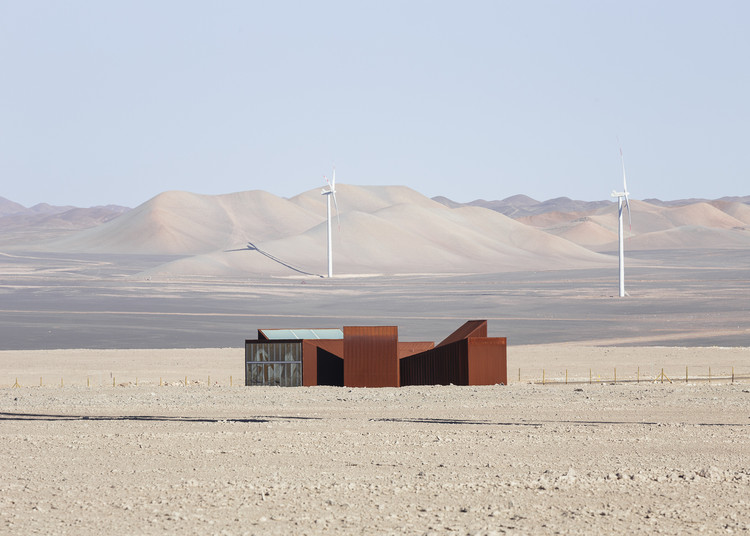
-
Architects: Emilio Marín, Juan Carlos López
- Year: 2015
-
Photographs:Pablo Casals Aguirre, Felipe Fontecilla
-
Manufacturers: Hunter Douglas

I
In 2013 we were asked to design a building for public use in the driest desert in the world:
The Atacama Desert.
The site is close to the first wind farm in northern Chile, located between San Pedro de Atacama and Ayquina. The task was to propose a program as well as a design for a building able to expose different layers of the meaning of the desert: natural, cultural and energetic.

The lack of a clear definition of a focus allowed us to approach the project as an investigation into the contemporary relationship between architecture and landscape.

II
It is evident that the most interesting Chilean architecture of the past 20 years built its language from a dialectical relationship with the landscape.

However, although part of the same generation of architects, we wanted to go a step further. The project aims to extend the boundaries and expand the modern vision of the interplay between architecture and landscape, where the main characters are two elements in a relationship of opposites.

In the project we saw the possibility to articulate other aspects of the relationship between territory and architecture, to break that dichotomy and integrate the proposal as a new landscape in the desert, a device that evokes other interpretations, an observatory where visitors change their understanding of this specific natural environment.

III
The main strategy of the project is to integrate three dimensions of natural origin: geography, landscape and ecology through three layers of architecture: Form, material and space.

Firstly, in relation to the geographical dimension of the desert, we create different volumes, positioned against the distant volcanoes of the Andes.

In the second layer, fitting the appearance of the large and disproportionate monochrome textures of the Atacama Desert, the building is covered in one single material. Corten steel envelops the whole of the architectural form, causing it to appear as a rock of molten steel in the vastness of the desert.

The third element is the patio space, which creates a new ecological dimension within the project, a new ecosystem. The volume frames a central vacuum, which it protects from wind, allowing the existence of a small oasis.

It is surrounded by an open corridor, which serves as a viewpoint to the sky and creates the conditions for an intimate experience between vegetation and visitors.




























